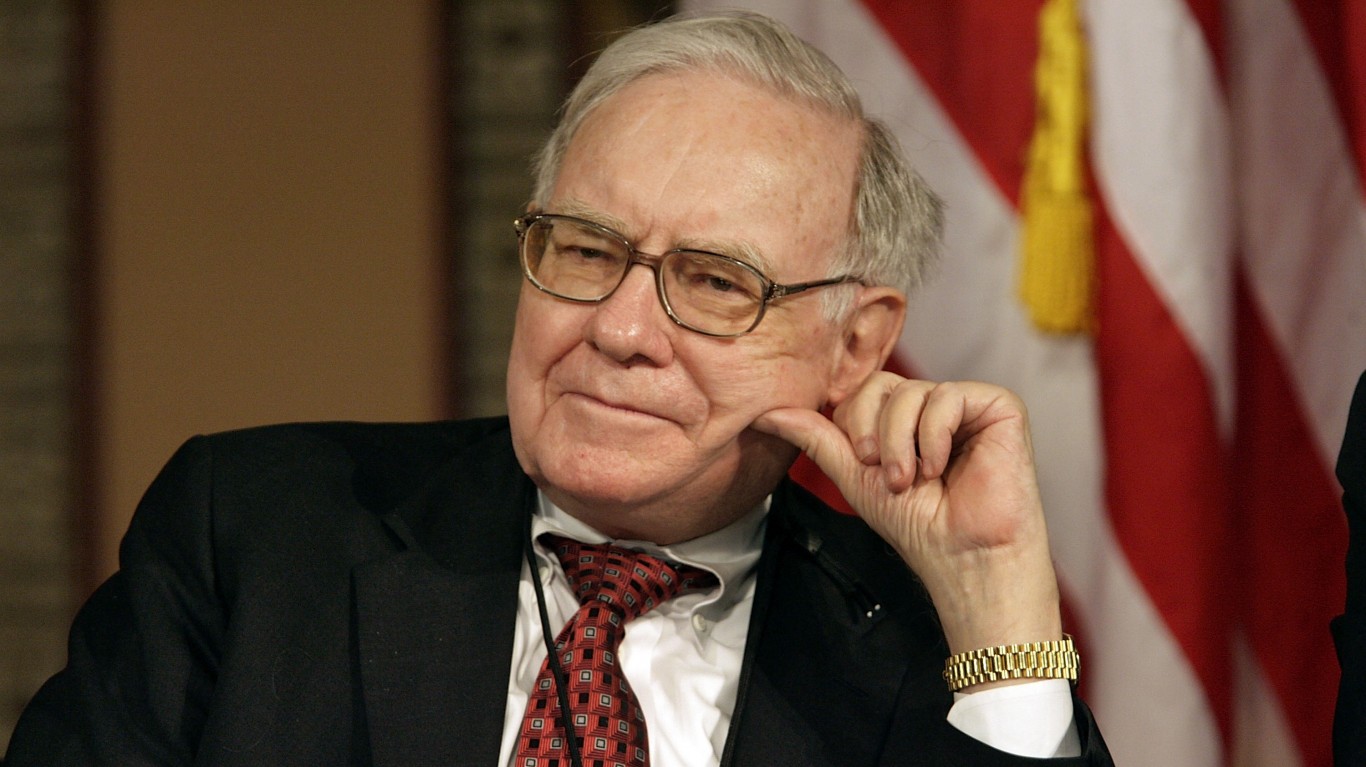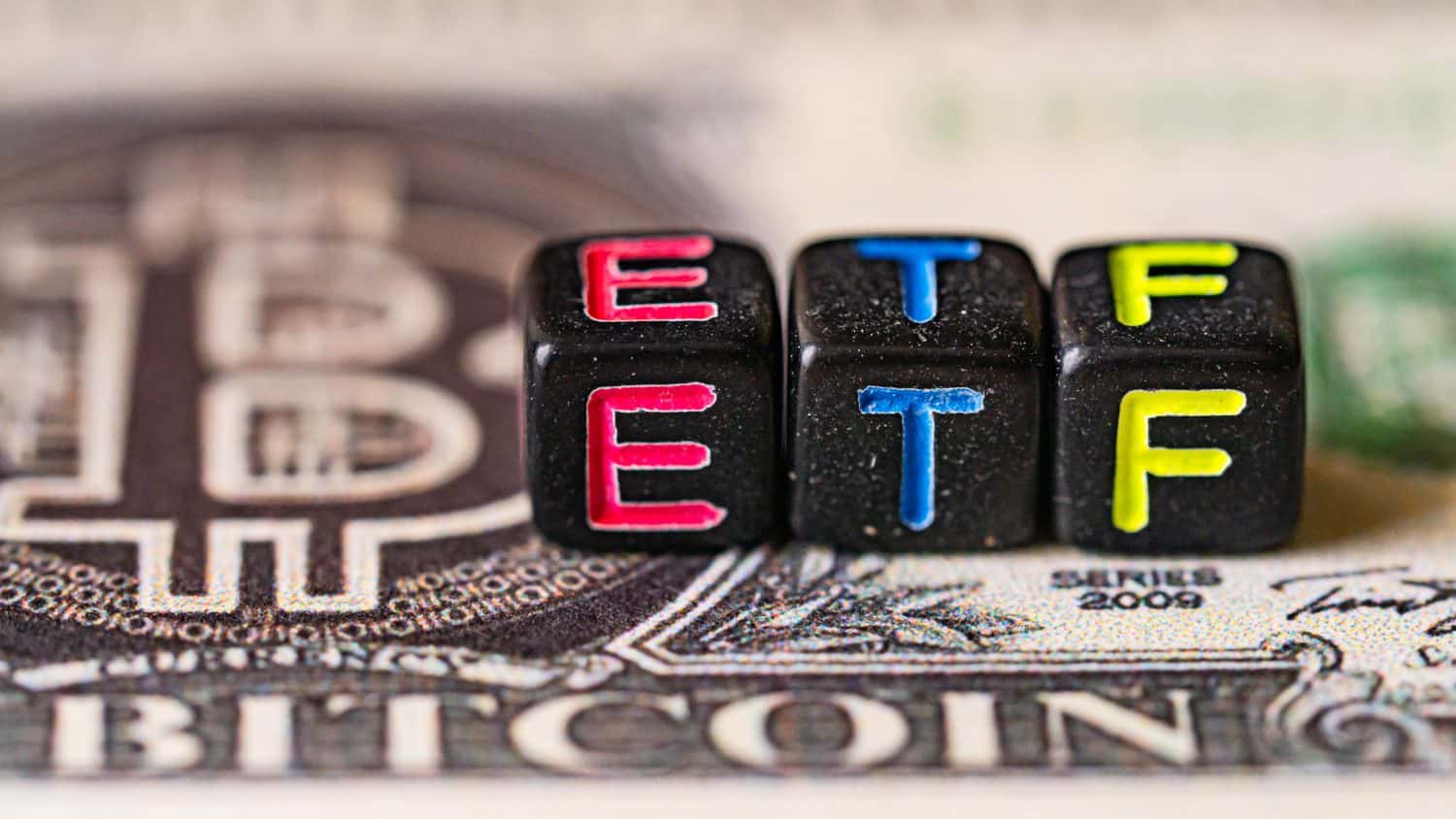
Warren Buffett’s stock picking prowess is legendary, and has been the foundation of his successful investing track record with Berkshire Hathaway. However, Buffett’s strategy has always been predicated on the buy-and-hold long game. He has been an avid supporter of passive investing as a strategy that can work in almost any market.
24/7 Wall Street Key Points
- Billionaire investor Warren Buffett believes so strongly in the S&P 500 Index that he won a million dollar bet that it would outperform any hedge fund manager who wanted to wager against him for a 10-year cumulative ROI.
- The Vanguard S&P 500 ETF (NYSE: VOO) is one of the most popular and widely held S&P 500 Index ETFs in the industry.
- With $2,500 monthly contributions compounding, a $160,000 investment solely in VOO can grow to over $5 million in 20 years.
- Passive income is simple- own quality dividends that pay you for doing nothing. Don’t miss out on our brand-new “7 Things I Demand in a Dividend Stock” report. It includes 2 A++ dividend stocks and how to spot future dividend winners that can put your returns on hyperdrive.
Happily ready to put his money where his mouth was, Buffett issued an open wager in 2007 of $500,000 for 10 years, betting that the S&P 500 Index would outperform any actively managed hedge fund that wanted to bet against him. Buffett’s attitude was, “After all, these managers urged others to bet billions on their abilities. Why should they fear putting a little of their own money on the line?”
The bet was eventually taken by hedge fund manager Ted Seides, formerly with Protégé Partners. Seides agreed to pit his hand picked portfolio selections against the S&P 500 Index returns, with the pot proceeds going to charity.
As the wager was made with $500,000 worth of Berkshire Hathaway stock, and $500,000 from Seides. The total pot was worth $1.7 million by 2017, on account of Berkshire Hathaway stock appreciation. The money was donated to Girls Inc., and the results showed that in 10 years, Seides’ total return was roughly 22% vs. 85% for the S&P 500 Index. Buffett had absolutely zero qualms about his readiness to do it again, re-emphasizing his confidence in the stock market, and the S&P 500, in particular.
Riding the S&P 500 Index With VOO

All of the major financial institutions with a presence in the Exchange Trade Fund and Mutual Fund arenas have at least one fund that tracks and mirrors the S&P 500 Index. Created by Standard & Poor’s analysts in 1957, the index represents a more comprehensive overview of US industry leading corporations than the more limited Dow Jones Industrial Average’s 30 stocks. With roughly 500 stocks in the index, the S&P 500 includes industrial rivals and has much broader industrial sector representation than the Dow Jones Average.
Vanguard is one of the leading ETF and Mutual Fund firms in the financial industry. Founded by John Bogle, who is considered “the father of index investing”, the Vanguard S&P 500 ETF, best known by its NYSE ticker, “VOO”, is one of the most popular and widely held ETFs in the world.
With an inception date of September 7, 2010, VOO has been going strong for nearly fifteen years. During that time, it has notched an average ROI of 13.06% and gone up 241.41% in 10-years and an average 14.61% ROI and cumulative 604.55% gain since inception, as of December 31, 2024. Its portfolio is structured to mimic the allocations within the S&P 500 Index, albeit on a reduced scale.
VOO: $5 million in 20 Years?

Since Warren Buffett continues to advocate passive investing in an S&P 500 Index ETF, an actual breakdown of the statistical projections, based on past history, indicates how one’s investment would perform. Various free Return on Investment (ROT) online calculators can be found on the websites of numerous financial firms. For example, a premise of a $160,000 initial investment with monthly contributions of $2,500 could grow to over $5 million in 20 years, not including reinvested dividends, and excluding taxes and inflation. This figure assumes that the average rate of return over the past 10 years (13.06%) remains consistent, and demonstrates how compounding is the underlying strength behind Buffett’s argument. This example would like as follows:
| Term | 20 years |
|---|---|
| Rate of Return | 13.06% |
| Initial Investment | $160,000 |
| Monthly Investment | $2,500 |
| Compound Interest | $4,246,165 |
| Simple Interest | $607,792 |
| Invested Capital | $600,000 |
| Total Return | $5,006,165 |
As this is a Buffet-style “buy and hold” strategy, there are a few other considerations to make investing in a VOO type of ETF work over the long term:
- Setting up regular investments. The model goes on the premise of a monthly $2,500 investment, which is something not uncommon for skilled professionals pursuing a F.I.R.E. (Financial Independence Retire Early) strategy. Whatever the affordable amount, a disciplined approach towards making the monthly contribution is important for achieving the growth. This is especially critical for retirement accounts, where the compounding and long term growth aspects are crucial when later income production has curtailed.
- Dollar Cost Averaging. This is the epitome of the “set it and forget it” philosophy, and is often practiced with 401-K plans sponsored by employers with matching funds. This approach avoids trying to time the market or to trade it. Dollar Cost Averaging mitigates the market volatility aspects, regardless of share price.
- DRIP (Dividend Reinvestment Plan). Although the above projections do not include DRIP, the reinvestment of quarterly dividends to add to the compounding and growth factors from regular contributions can help to accelerate gains. If one were to add the 1.22% dividend yield to the 13.06% average ROI rate, this would equate to a 14.28% ROI rate. The 20 year return would therefore calculate to $5,189,478. This results in an extra $183,313 at the end of the day.
It’s Your Money, Your Future—Own It (sponsor)
Retirement can be daunting, but it doesn’t need to be.
Imagine having an expert in your corner to help you with your financial goals. Someone to help you determine if you’re ahead, behind, or right on track. With SmartAsset, that’s not just a dream—it’s reality. This free tool connects you with pre-screened financial advisors who work in your best interests. It’s quick, it’s easy, so take the leap today and start planning smarter!
Don’t waste another minute; get started right here and help your retirement dreams become a retirement reality.
Thank you for reading! Have some feedback for us?
Contact the 24/7 Wall St. editorial team.





